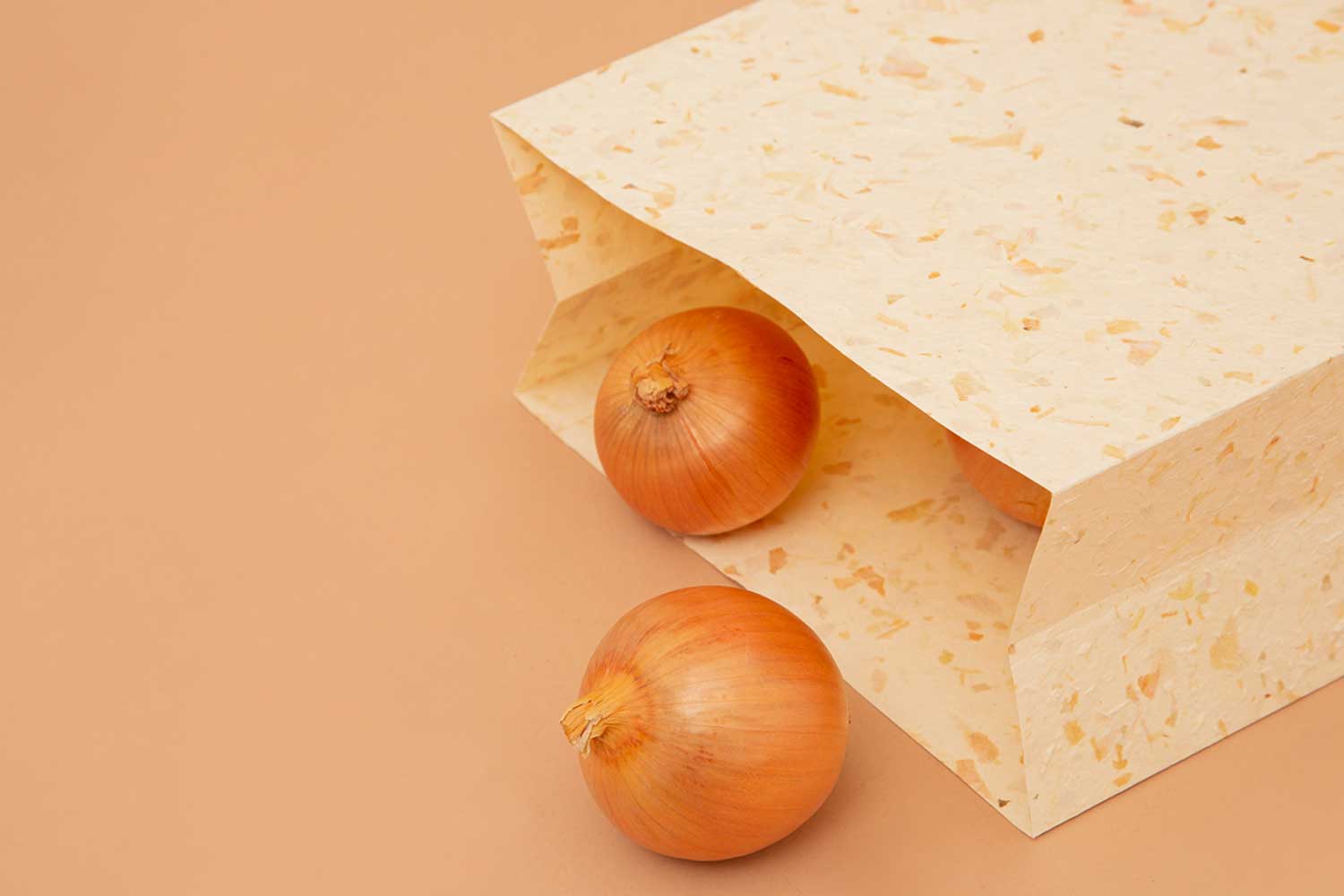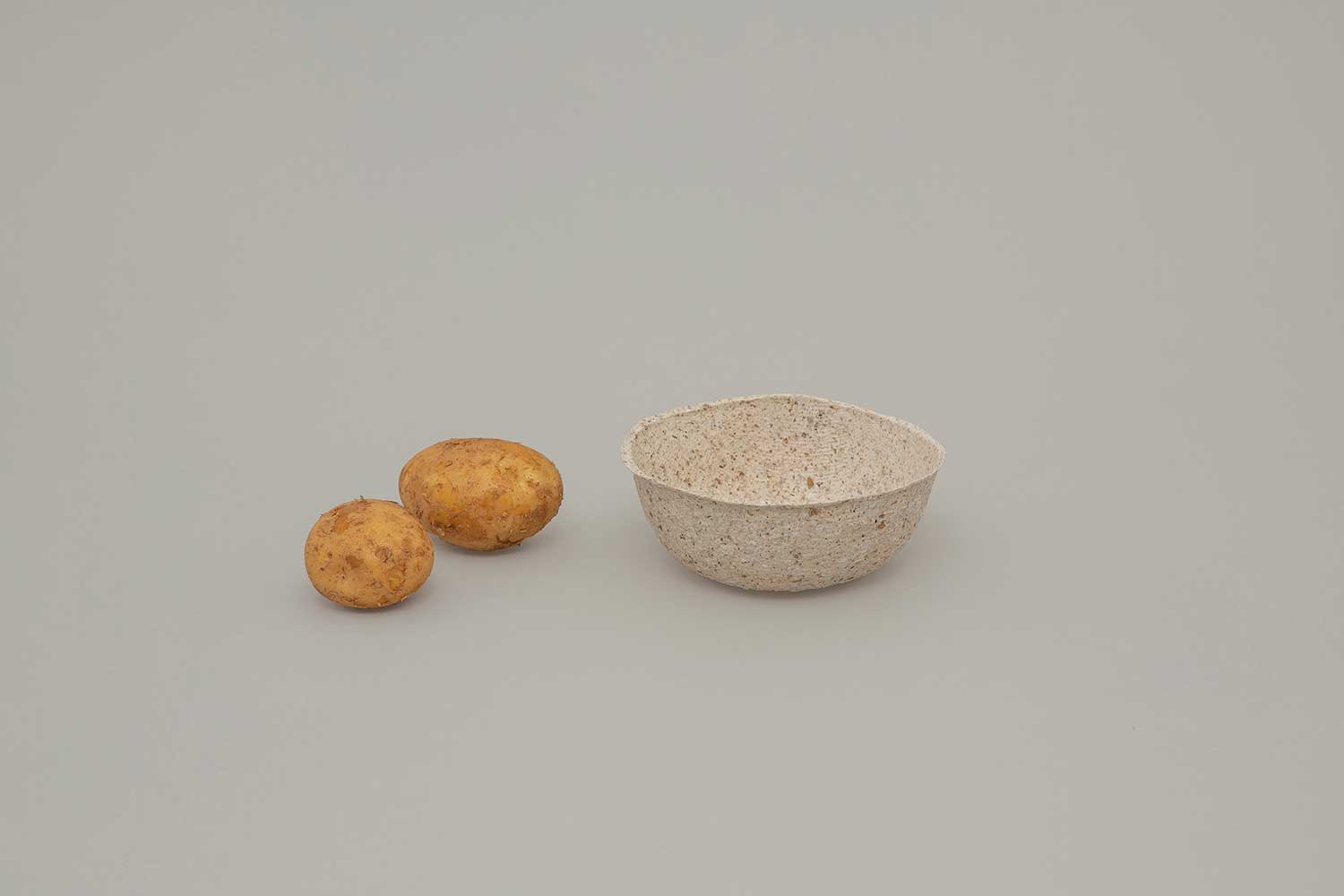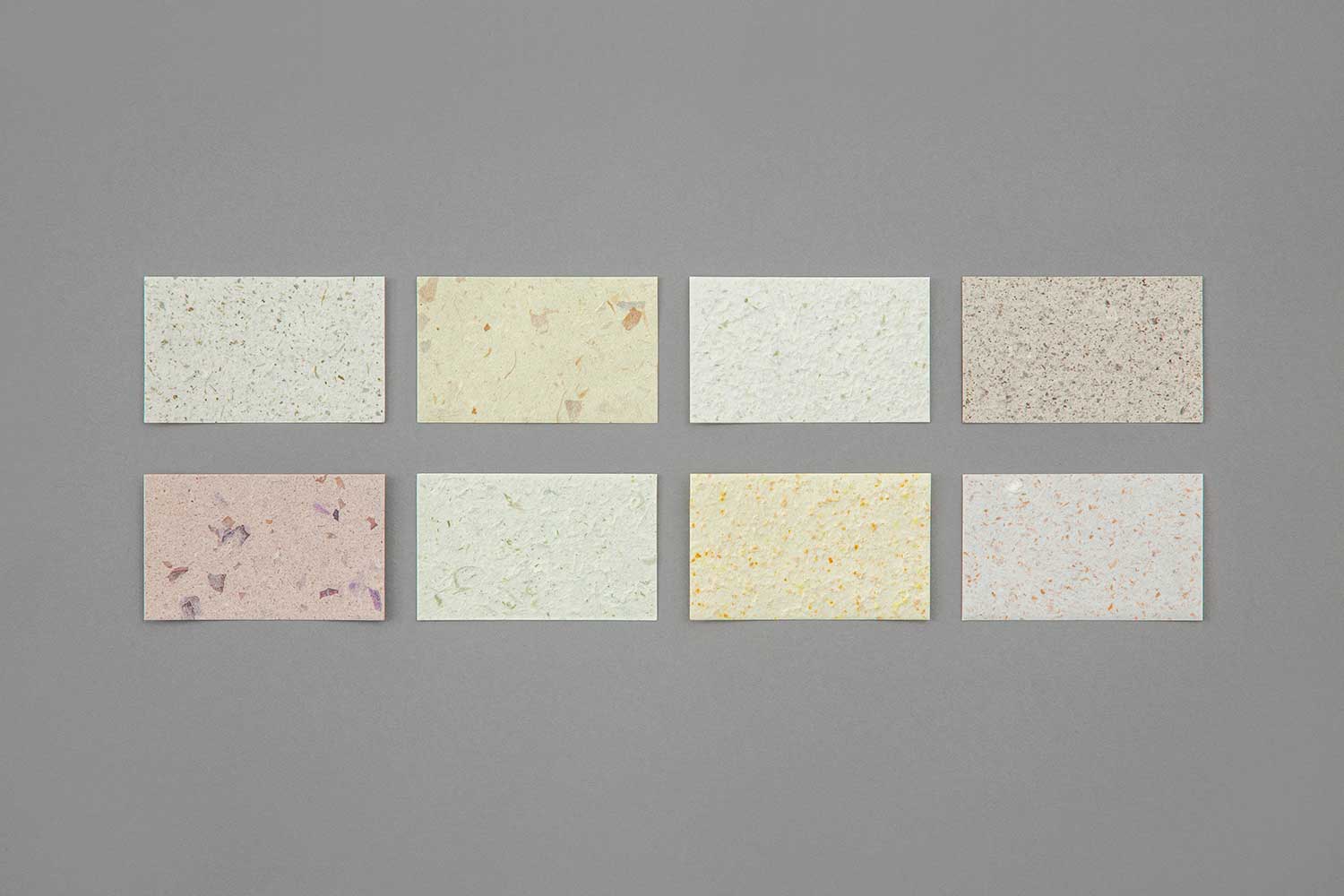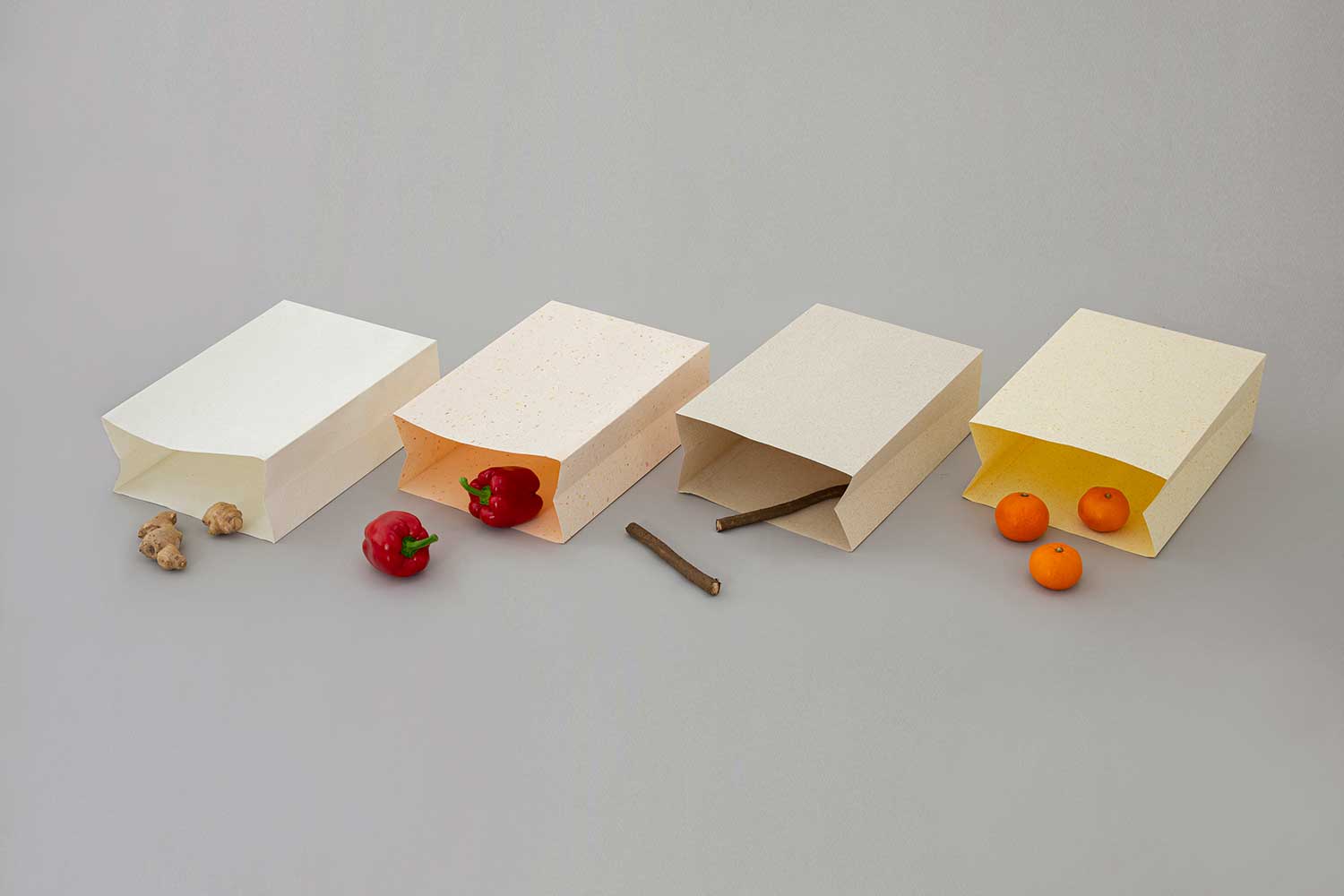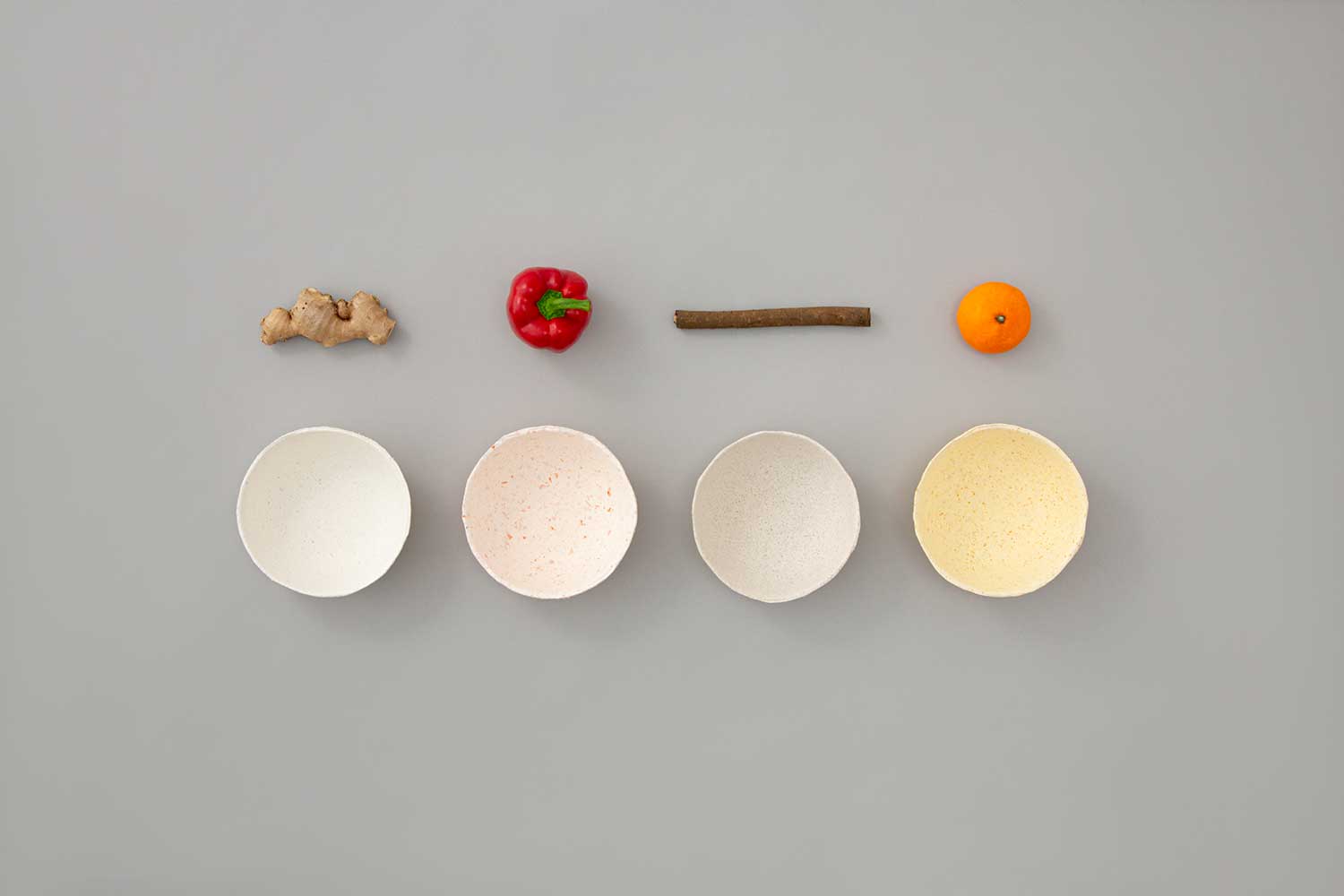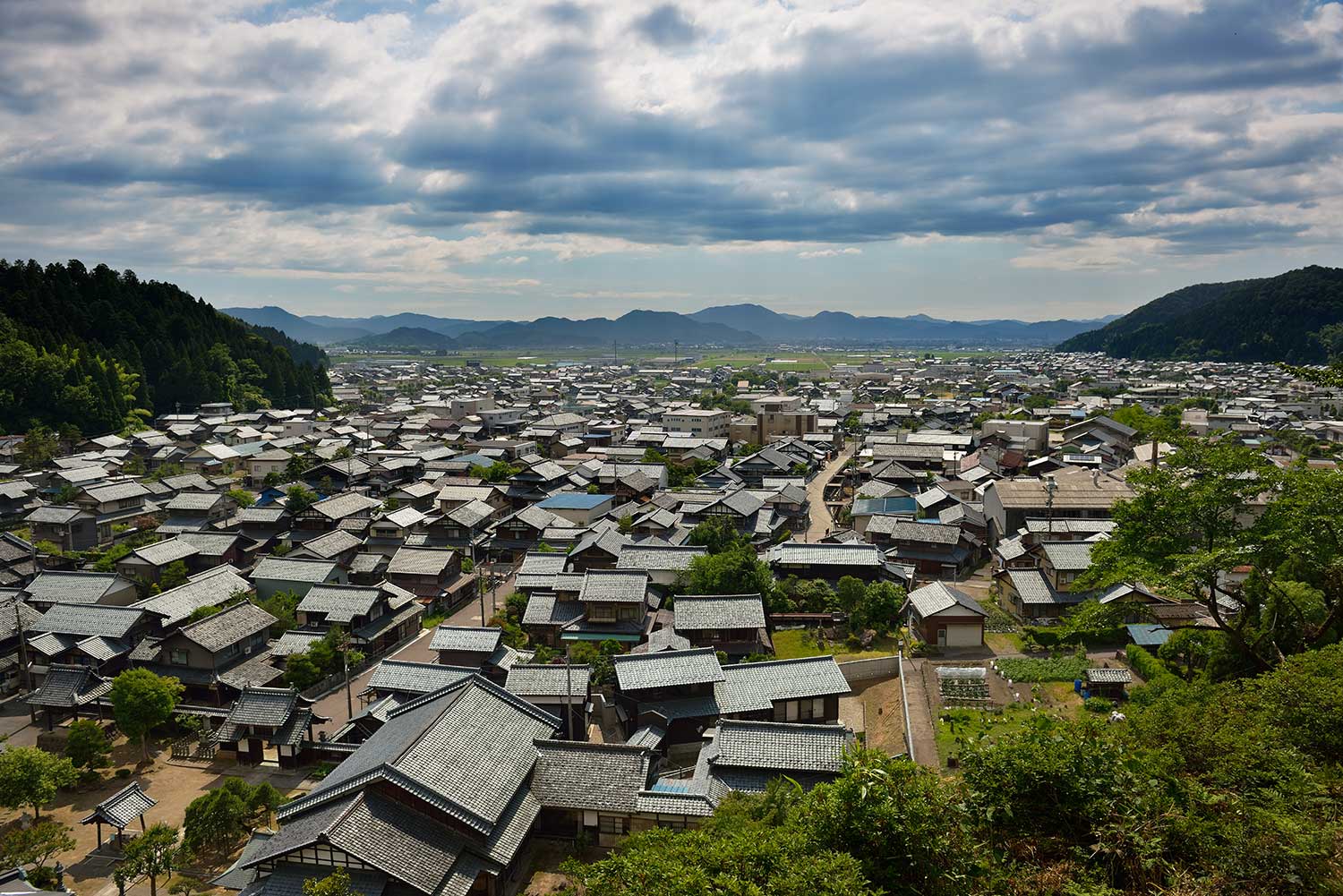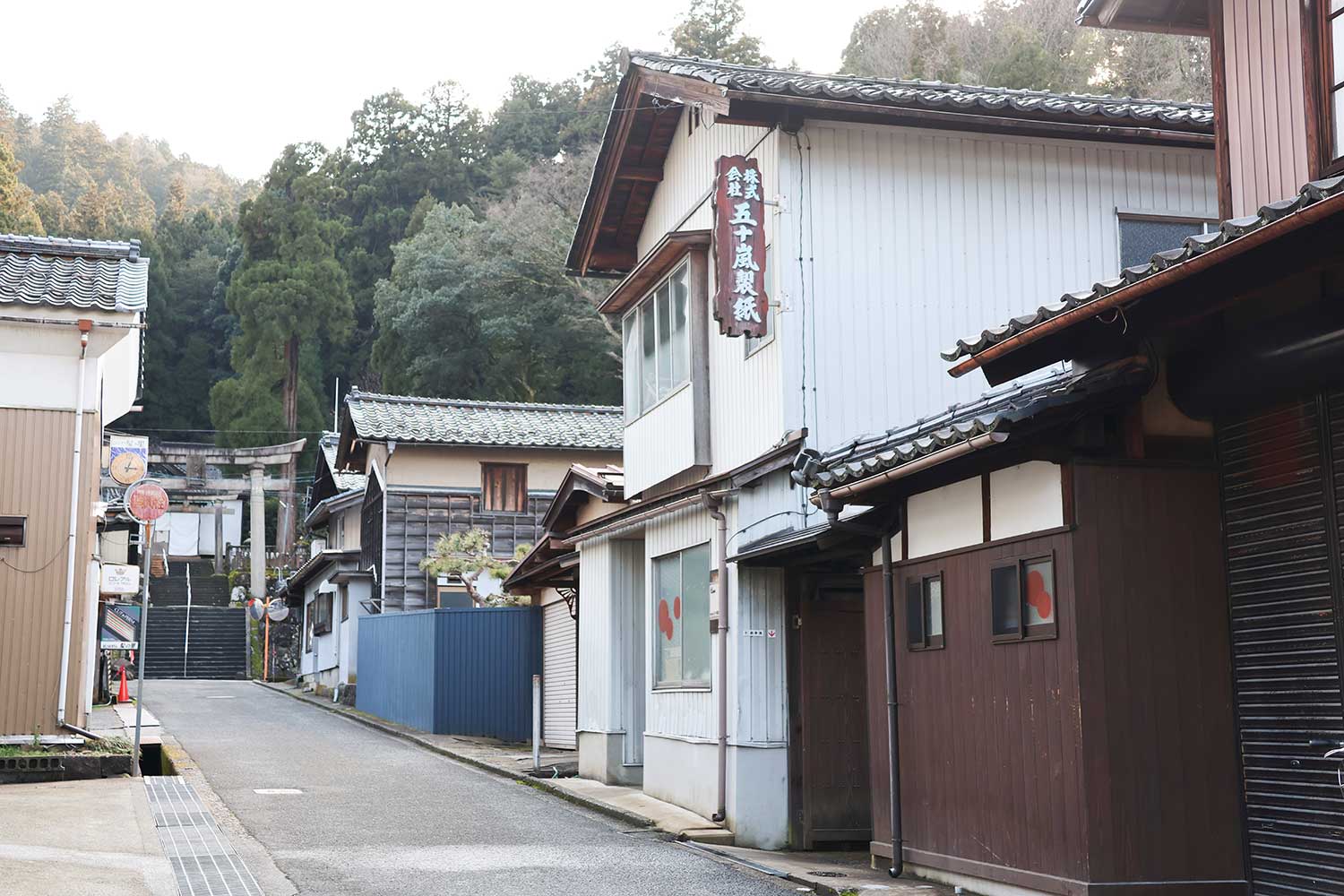
Forest

River

Tradition

Ecosystem
Food Paper Made from Fruit and Vegetable Peelings Using Traditional Techniques
Long-established company taking on the challenge of breathing new life into traditional Echizen washi
Igarashi Seishi Co., Ltd.,
(Fukui Prefecture)
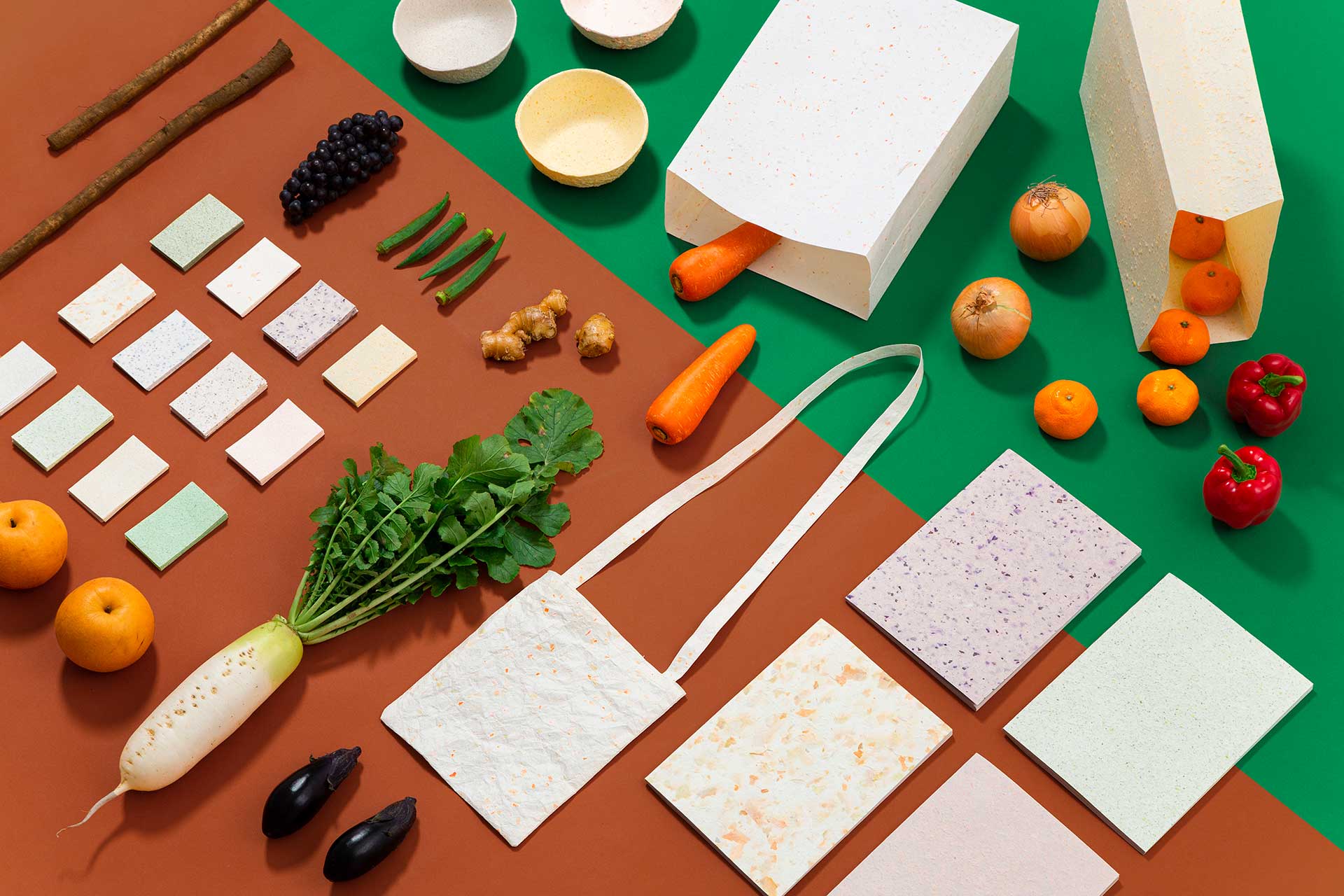
Overview
Washi paper is a traditional Japanese craft, and Echizen washi, from Echizen City, Fukui Prefecture, Japan, is one of the oldest washi-producing areas, with a 1,500-year history. In 2019, the long-established Igarashi Seishi Co., Ltd., developed its “Food Paper” brand, utilizing the skins of fruit and vegetables discarded at food processing plants in Fukui Prefecture. This brand of products was created as a countermeasure to the decline in the domestic production of Japanese paper raw materials, such as kozo, mitsumata, and gampi.
Washi paper is mainly made from the skin of mulberry trees, but Food Paper products are made from the skins of mulberry trees and fruit and vegetables (e.g., onions, tea, grapes, carrots, cabbage, and mandarin oranges, etc.) and are both handmade and machine-made using Igarashi Seishi’s unique paper-making technology. Because up to 50% of the raw materials for Food Paper products are made of dietary fiber, the amount of mulberry used can be significantly reduced. Igarashi Seishi manufactures and sells Food Paper-brand notebooks, message cards, accessory cases, shoulder bags, stocking systems, and other OEM products.
Successful outcomes
- Reducing waste by utilizing over 1 ton of fruit and vegetable peelings per year
- Igarashi Seishi has had an increased range of requests from a variety of companies and has been making paper that incorporates the products handled by those companies.
- Igarashi Seishi and Echizen washi have become more well-known, as Food Paper has been introduced in a range of media.

Working toward Echizen washi use in everyday life
Food Paper products are designed with a well-balanced scattering of small fragments of colorful fruit and vegetable peelings. Thus, Food Paper washi paper arouses curiosity, making you want to reach out and experience its texture and scent. Traditional craftswoman Masami IGARASHI decided to develop the Food Paper brand in 2019. It was a time when raw materials shortages were becoming more serious.
Igarashi Seishi Co., Ltd., founded in 1919 in Echizen City, has mainly produced Echizen washi paper for fusuma paper and wallpaper. There are currently eight people working at the company. The company specializes in handmade original washi paper with various patterns and colors and is used in hotels, restaurants, cultural facilities, and station facilities, etc. In addition, in response to the changing times, Igarashi Seishi has created new products such as washi glass made by impregnating glass with washi paper, tapestries, washi paper lights, and washi paper accessories.
In 2019, IGARASHI participated in a management and branding course sponsored by Fukui Prefecture. For more than 10 years, demand for Echizen washi had been sluggish, and it came to the point where IGARASHI realized that growth could not continue in the current form, that new things would need to be tried, and that she desired to create a brand unique to Igarashi Seishi. This began a process of brainstorming for creating a brand. In setting out on this course, IGARASHI also faced the company’s issue of raw materials shortages and aimed to develop new products. That is how the Food Paper brand was developed.

In fact, the origin of the Food Paper brand lies in the summertime research that IGARASHI’s second son, Yuto, had been doing for five years since he was in fourth grade at elementary school. He made handmade paper every year using only the fibers of various fruit and vegetables. Mrs. Igarashi also had experience making washi paper using azuki beans, scallops, and diatomaceous earth. Her son’s idea was further refined by her own craftworking skills, and, by adding mulberry and hemp, the paper was made into a more-durable, high-quality paper. Furthermore, with the support of creative director Naohiro NIIYAMA (of TSUGI LLC), with whom she happened to be paired with at a course, the concept and public relations tools were in place, and the Food Paper brand was complete.
The fruit and vegetable peelings used in the Food Paper brand are selected from those that are in season each time of the year. The fruit and vegetables are provided free of charge by vegetable cutting factories, collection points, and friends’ grape farms, etc., within the prefecture. (Note: Legally, Igarashi Seishi is not a waste disposal company and cannot purchase waste.)

However, in the month leading up to Food Paper’s release, IGARASHI was unsure whether it was okay to launch sales or not. Washi paper is beautiful because it is completely pure, with no waste materials within it—but Food Paper products are made by using the actual dictionary definition of waste. She was worried that the name of historic Echizen washi paper and its heritage would be tarnished. Still, she took a step forward.
IGARASHI recalls her thoughts at the time: “If someone doesn’t do something here, no one will know about the shortage of raw materials or the current situation of Echizen washi. It will also be good for PR to show that Echizen washi can do things like this. If something changes as a result of this, then what I did will be meaningful. We have to give it a try.”
Looking back now, IGARASHI says: “I’m definitely glad I did it.” The number of new business partners and customers has increased, and the company has attracted more attention from the younger generation, which is different from its traditional customer base. The trend of the times toward a sustainable society has also provided a tailwind.
The development of the Food Paper brand also brought about changes for IGARASHI. While procuring raw materials, she saw firsthand how large amounts of edible ingredients were being thrown away because they were sub-standard. “My mindset as a consumer has changed,” she says. For a new series, they created a Food Paper trash can with the hope that it would give people an opportunity to think about the meaning of throwing things away.
In Japan, washi paper is recognized as a high-quality and high-price paper. IGARASHI looks ahead cheerfully, saying, “I want to work toward a washi paper that can be used on a daily basis rather than as a luxury item.’’
Food Paper
Igarashi Seishi Co., Ltd.,
https://foodpaper.jp/index.html

